A huge thank you to Mr. Vinnie Froehlich for providing AAA with yet another fantastic and original piece! This one hits home as well as I’ve been having anchoring trouble….it seems I immediately benefit from your articles so I know my readers are too. Thank you again.
I will insert pictures first and then text….
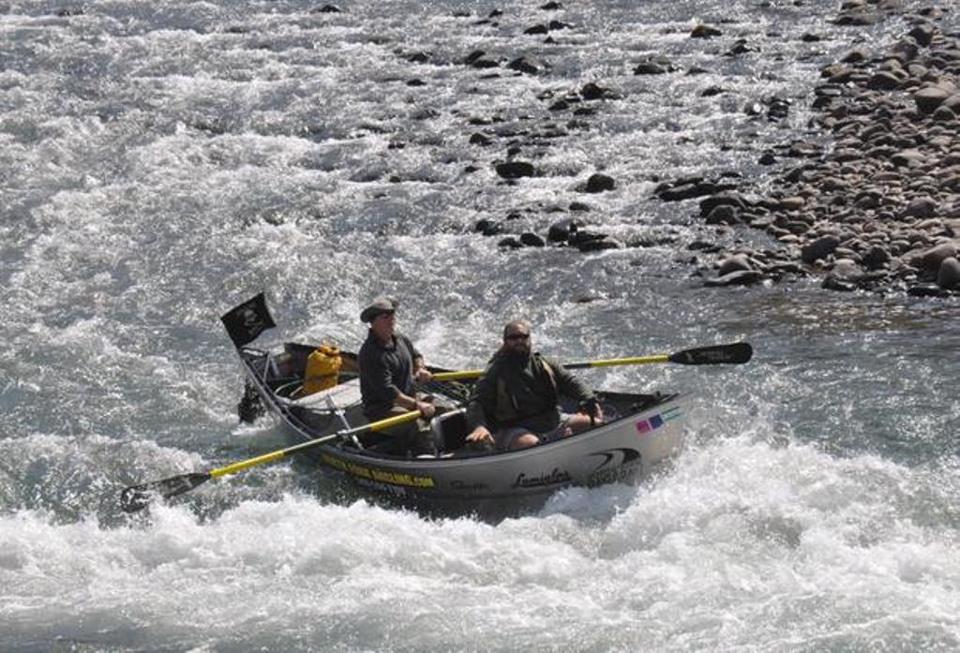
Over the past 25 years I have seen a variety of anchors and anchor systems mounted astern various drift boats. Some quite interesting and functional, and others simply make you scratch your head and wonder – WTF is that guy thinking ?
Since I took my first river trip sitting in the front seat of a homemade drift dory back in the 80’s, I knew instantly in my heart that I would eventually end up on the rowing web pulling my own oars, and in my own boat. And with that self prophecy, it wasn’t very long until I was. I had the privilege of learning the science of drift fishing from some of the best unknown, yet extreme steelhead anglers I have ever met to this day. And while their knowledge of fishing was superb, their knowledge of how to properly set-up a boat for “on-the-move” fishing was second to none. It was there in that front seat where I began to understand the importance of having the right anchor system; And how that, matched with the right anchor, truly was a key factor to consistent catches on a fickle whitewater river. I have built my swift water fishing techniques around this philosophy and it’s proven time & time again, to be spot-on; Season after season.
Let’s clarify and quantify exactly what I am talking about in this article. First you must understand that I am a firm believer that a drift boat is not a boat intended to have an outboard motor mounted on the transom; That is what a sled is for. Second, with the first point in mind; It’s my opinion that the anchor stinger davit should be placed dead center & exit the transom in the middle. Not pulled off to the side for motor clearance rendering the boat a transportation vessel instead of a well-tuned fish-slaying machine !
A side mounted anchor stinger will not track the boat in a straight line and therefore not recommended for the style of fishing described within this article. Third and most importantly, the content of this article is the product of many years of learning what a few elite professional fisherman do to up the odds at times of high fishing pressure, or when traditional drift fishing methods are not producing fish.
What I am going to describe in great detail is extremely dangerous; And probably the single most dangerous thing a skilled oarsman could do on purpose while fishing.
Have your attention yet ? ..thinking I’m nuts ? ..bear with me.
Now, it doesn’t matter if you have a glass boat or aluminum, although I prefer the latter for it’s superior tracking while fishing this style. Let us assume your boat is set up with a standard center anchor davit and a side pulley system. Not that a floor mounted pulley system is inferior in anyway; Just to keep it simple for the sake of journalism.
Balancing and weighting your boat properly is of the utmost importance for this to work right. Let’s also assume that you are using a standard lead pyramid anchor (30-35lb) attached to 60-75ft of 7/16″rope. Here we go.. For running down the river and parking on the inside corners & center shoals to drift fish or exit and fly fish, this common configuration is great. In fact, it’s ideal, and the safest way to utilize a drift boat. Hence, why drift boat manufacturer’s build boats with this set-up. However, for back-trolling & running plugs or divers in heavy fast water, and to still maintain the ability to work them slow enough for a decent presentation, this anchor simply does not come into play.
Do not ever attempt to drop this type of anchor in fast heavy current or deep water to slow your boat down & try to keep fishing. A solid anchor will hang-up instantly and lodge in the river bottom; Sinking the boat in seconds, ..trust me on this !
Many new drift boat owners have found out how fast the river will come in and say hello by attempting to do the above; And anybody that has real time on a river has seen this happen. It’s not worth losing a life – so don’t do it !
Keep your lead pyramid anchor in the nest as a spare. I’ll explain why exactly later; But here it also helps with weighting the rear of the boat which is beneficial for tracking.
Get yourself some heavy steel chain (at least 3/8″ link) and assemble a 30-40lb pile of it.
Now, there are several schools of thought and insights as to what configuration of chain is ideal for running a drag. Some boaters, myself included, wad the chain up into a compact ball evenly dispersing the weight and mass; While still having flex and mobility. Others will drape short lengths of chain onto a ring, bar, steel rod, or centered eyebolt until the appropriate & desirable weight is achieved. They all work pretty well for the most part, and for the bulk of scenarios. Pictured in this article is a beautiful stainless steel chain anchor system used by a friend, that incorporates a couple extra lengths that can be added or subtracted to get that perfect weight for forward slip as water flow changes throughout the year. Expensive – But very effective; And pretty !! I have used them all, and prefer the balled-up loose wad of chain the best. For my boat it works perfectly. Plus, it’s ten times quieter in the water when deployed. The loose ball of chain also stows neatly into a milk crate or five gallon bucket for transport. Something else that I do is run the anchor with an assist pulley (pictured) that decreases 30% of pulling force when retrieving the anchor. What this is essentially, is a rescue type swivel pulley attached to the anchor itself, and then securing the tag end of the rope to the stinger underside. After a long day of fishing it helps immensely with fatigue and hand cramps. There are a couple things to consider when using an assist pulley like this. You have to “double” the amount of rope used for deployment. That standard 75 feet of 1/2″ line will need to be 150 feet because of the loop factor. This anchor system also deploys rope incredibly fast. So mending & feathering by hand then finding the sweet spot is a must before stuffing the rope into the jam-cleat. Because of the loop factor created, twisting and fouling of the rope can also occur if you are not paying attention to how much rope is deployed or how your anchor is reacting with the bottom. What I find to be another major benefit is the ability to get your rope back should you hang-up & lose your anchor. Rope, let alone anchors, can be expensive to replace. An anchor assist pulley used in tandem with a front mounted ratchet pulley (pictured) also gives you 30% more pulling power to free a stuck anchor once you’re positioned above it. This makes a significant difference in physics and blisters.
Which brings up a good topic, so let’s talk about a hung-up anchor..
Look ..Chain anchors are not snag-proof. Merely less resistant to becoming snagged.
So get it out of your head that changing your anchor to a chain will somehow allow you drop it any place you want and miraculously keep you & your passengers safe. That’s about as far from the truth as you can get. Aside from the initial jerk and sudden stop of forward motion, a bound anchor can be a very traumatizing event and certainly a most dangerous component of drift fishing from a boat.
One positive plus with keeping a longer rope attached to your anchor is having the ability to row to the side and give yourself the chance to pull the anchor free from upstream. While more often then not, you can usually pop the anchor free by bouncing on the bow of the boat and shifting weight up and down. Where feasible you can use a boat hook and reach down and pull it up out of the rocks. If it’s really stuck and the risk of sinking is increasing by your attempts to free it, and you’ve exhausted all avenues of retrieval; Simply let the rope go through the pulleys and file out the back of the stinger as you float away from danger; Donating an anchor & pulley to the river, but not the rope.
Your anchor w/assist pulley are now lost; Get over it and be thankful you are still alive. That nobody was drowned and that you are floating, not swimming. This is where you pull over & snap on your old pyramid anchor and use it to stop & fish back to the take-out ramp with your tail tucked between your legs. You can’t operate a drift boat on a whitewater river without inherent risk. Running a drag anchor up’s the ante considerably. Never tie a knot in the end of your rope supply – Ever ! And always keep a sharp knife handy. Because you just never know what happens, and happens quickly.
Say you haven’t experienced the “loss” and you want to begin using your new chain anchor as a valuable tool in your fishing arsenal. It should play out something like this.
You are coming through a chute or rapid and into the top of the next hole. Pull the boat towards the inside seam just out of the heavy rip-water but not into an eddy, deploying the anchor. Keep the rope in your hand with the tension tight enough to feel the anchor make contact with the bottom; Jam it in the cleat now !! Grab the oars and start back-pulling to slow your approach. At this point your anglers should already have their plugs in the zone and at the proper distance. Once the water calms slightly, the hole shallows some, and while you are slipping forward, you will feel how the boat is going to track.
If it whips or “rag-dolls” side to side you have too much anchor rope out. Drop the oars and retrieve some rope until your track line is stable and straight. There are a bunch of dynamics and stuff going on while fishing this way; So if you can’t multi-task and make split second drastic decisions; Or you are not physically fit enough – Again do not attempt to work a boat like this. It takes years of trial & error, serious horse-power with some fancy rope and oar work to do it right. …Not to mention a set of brass balls !
This is extreme drift boat fishing at the top level ! ..welcome to the varsity team.
Now the controversial side of the equation. Avid conservationists & tree huggers will argue that dragging an anchor in a river is detrimental to marine life. Yes it can be; If you are running through slow shallow seams and spawning beds. That’s hardly what we are doing here. Proper placement just off the heavy seam in fast to moderate current onto a hard, rocky, or sandy bottom; And I would have to conclude that the sediment and organisms that are dispersed by the slipping anchor would benefit the food chain accordingly. Much like wading into a fishing stream and stirring up the bottom with your feet to stimulate fish activity. Just in the past five years, I have fished with two different biologists, an ocean marine science professor, two outdoor journalists and a state wildlife official; And all of them agree that no potential harm to the fisheries would result from doing it right. It’s simple – If you are concerned about harming fish, don’t drag an anchor and certainly not through reds.
There is no need to drag or force an anchor downstream in slow water with gravel beds. Laying on the anchor and being too lazy to pull the oars in frog water because you are tired, is no excuse; And frankly pretty lame.
While this article was not written with the intention of controversy, or to cause a stir with the environmentalists, certainly someone will no doubt be offended. For that I apologize.
Aside from the many don’ts, the liabilities involved, and the scoffing haters; Fishing with a drag anchor is very effective. Much like having the right set of oars and nearly as important. Having the right anchor system on the right boat will put you at the top of your game while chasing trophy fish. And if used correctly, will at times put more fish in your boat then fishing without one. The fishing methods, techniques, and gear that can apply, vary only to the limits of your own imagination. But remember the danger factor.
Know and respect the water you are running. Operate within your limitations & skill.
Water is an incredible force – Not one to be taken lightly. Even the best are on edge when fishing this way; If they aren’t, they are too complacent or just plain screw-loose.
Here’s the deal in a nutshell. By deploying a drag anchor your chances to cause a catastrophe increase tenfold. You need to understand that essentially you are putting yourself, your passengers and equipment at risk – On Purpose ! ..One must weigh the risks and decide for yourself if this is something you are willing & prepared to deal with should things go south.
Heed my warning; It’s not “If” you are going to hang-up an anchor & create a potentially life-threatening situation; It’s “When..”
Keep a clear head and BE AWARE of your situation at all times !
Have fun; Be safe; Always wear a PFD. If you are unsure about anything; Hire a professional guide that practices this style of fishing and learn from someone that has been there – done that.
Peace & Tight Lines – From The North Fork
Vinnie
Note: The techniques described above are practiced only on familiar waters where fishing from a boat is legal; So check your regulations !
About the author: Vince Froehlich is a full-time professional fishing guide and owner of North Fork Angling LLC, operating in SW WA State and seasonally in Alaska.
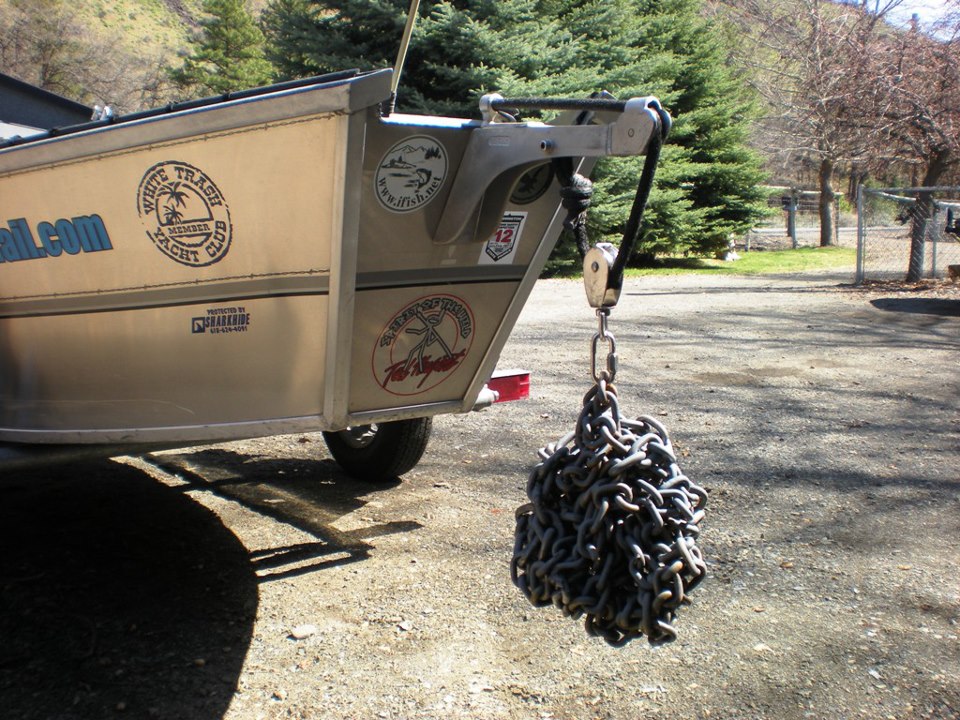
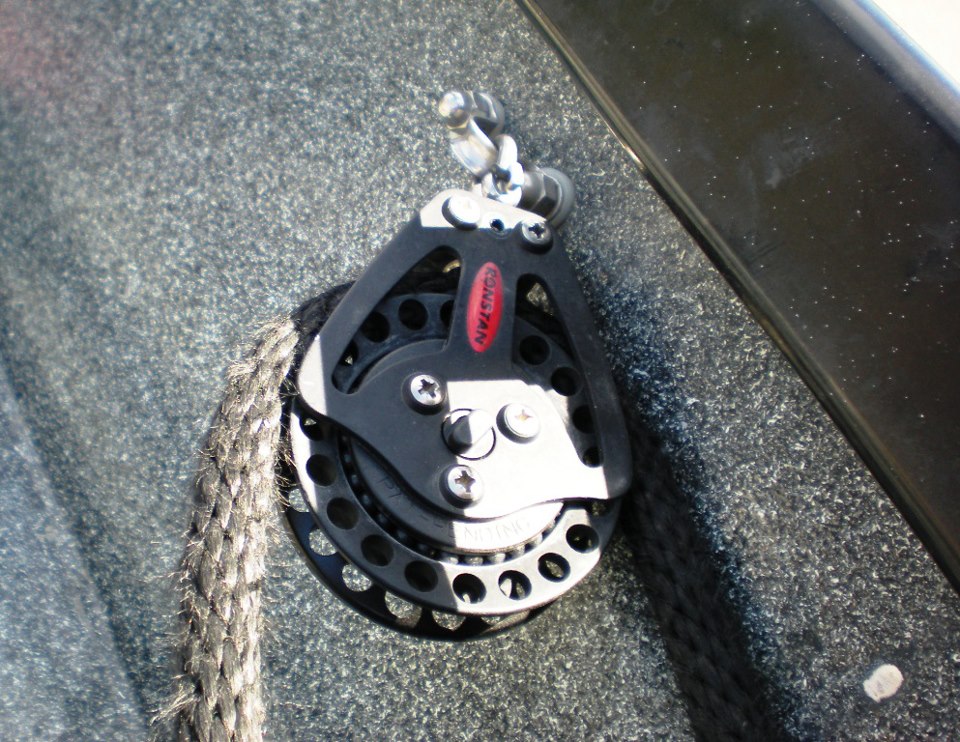
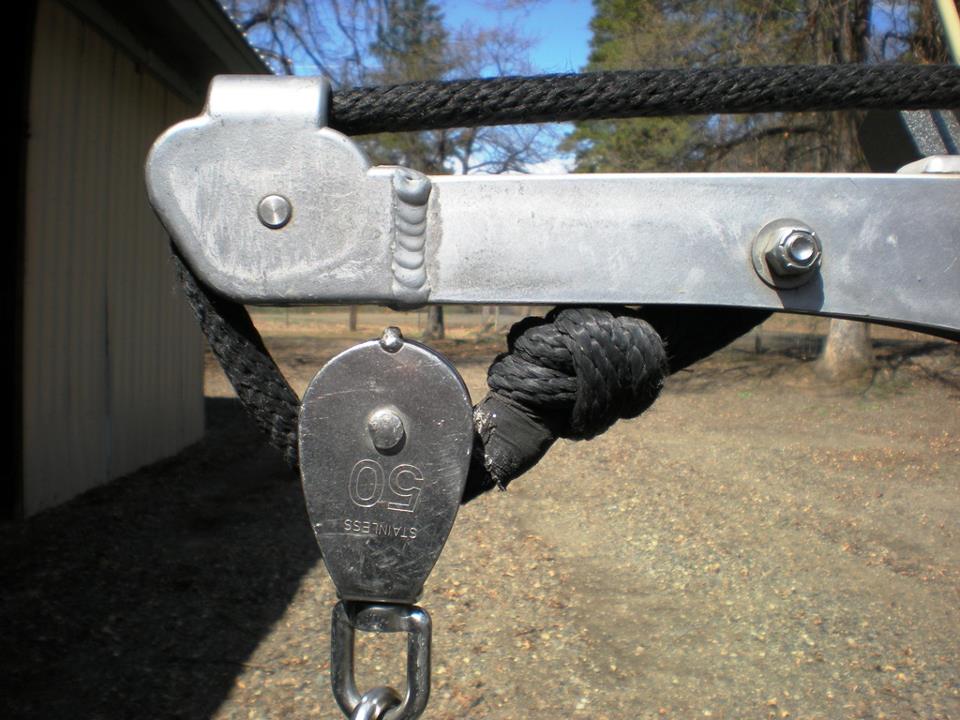
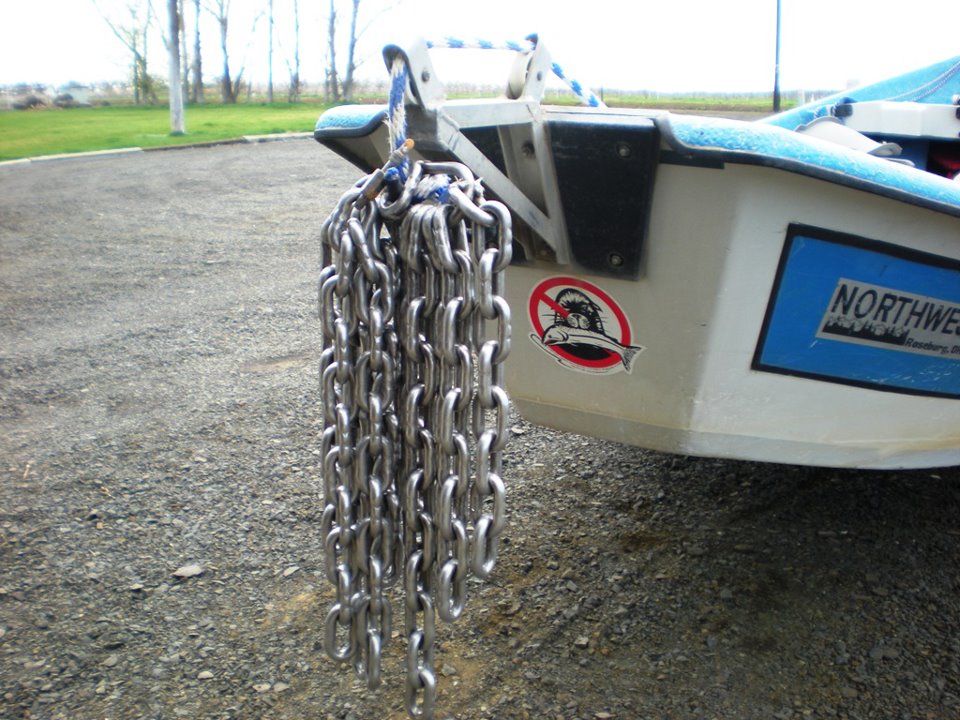

This was an incredible read. The content is the real deal. I couldn’t agree more about outboards on driftboats. But to each his own. I will be changing over to a drag chain system and looking forward to honing my skills with this technique. Great write up Vinnie! I hope you continue to contribute to my favorite on line fishing web site. Love your stuff!!!!
Wow… that was a great article. Alot of good info from a seasoned pro.
That was quite an article Vinny…great read.
Awesome article. What a great contribution.
This can be done with a pyramid as well. We do it all the time. Just don’t let as much rope out. You get a feel for When it is dragging right, and when it ill hang up or stop the boat. Great for side drifting too, or getting multiple casts in through a hole. Familiarity with the river will keep you safe, don’t try it in high water the first time on a river.
Agreed. Thanks for the educated comment Nathan.
That is a very huge eye opener to a bank fisherman looking to get his first drift boat. LOTS of great information (as always from A3)
Thank you, Les.
Thanks for sharing your info. I truly appreciate your efforts and I am waiting for your further post thanks once again.
Great article! I’m curious as to how exactly you make the ball with the chain? How is it kept in the ball shape and how is it connected?
Thanks!
Dave, The ball is actually three different styles, and sizes of chain in similar link pattern. Some of it is old semi-truck tire chain, other is light duty tow chain etc. The chains were basically tied up in knot, and the loose link sections were interwoven to get the best somewhat round shape, and then you take an arc welder and just periodically tack the high spots and the intersects. It’s not designed by any rocket scientist believe me, but it’s a very durable anchor that performs very well on the river in this configuration.
Hope that helps.
Thanks VF!